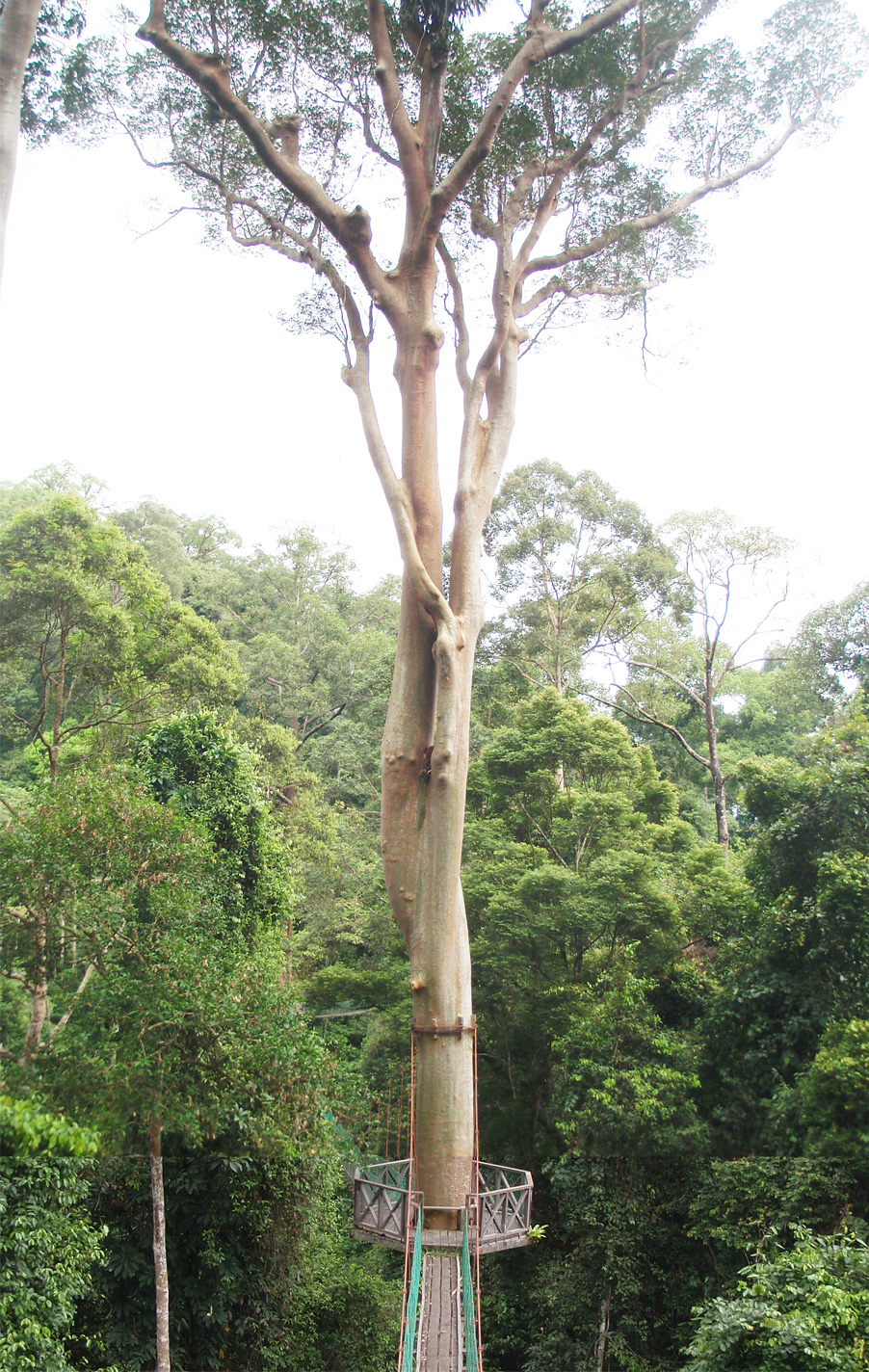Koompassia excelsa, commonly known as the Menggeris or menggeris tree, is a species of tropical hardwood tree that is native to Southeast Asia, including Malaysia, Indonesia, and Thailand. It is known to be one of the tallest trees in the region, with some reaching heights of up to 80 meters. But perhaps most impressively, it is also one of the oldest trees in Southeast Asia, with some individuals estimated to be over 1,000 years old.
One of the most impressive aspects of the tree is its longevity. While it is difficult to accurately determine the age of a tree, some individuals have been estimated to be over 1,000 years old, making it one of the oldest trees in Southeast Asia. Its slow growth rate and longevity make it particularly vulnerable to habitat loss, and the tree is currently facing numerous threats, including deforestation, logging, and climate change.

The Menggeris tree is a member of the Fabaceae family and is known for its impressive ecological and cultural significance. It is particularly important to the local ecology, as it provides homes for a wide variety of creatures, including birds, monkeys, and insects. In fact, it is known to be a keystone species in many rainforest ecosystems, providing nesting sites for birds and creating a microhabitat for other plants and animals.
Aside from its ecological importance, the menggeris tree is also culturally significant to the indigenous people of Southeast Asia. Many consider it to be a sacred tree and incorporate it into their traditional healing practices. The resin of the tree, which is known as "menggeris honey," is also highly valued and is harvested by climbing the tree and collecting the honey from the hives that are often found on its branches.
Despite its importance, the menggeris tree is facing numerous threats, including deforestation, logging, and habitat loss. In recent years, there have been efforts to protect the tree and its habitat, including the establishment of protected areas and conservation programs.
One of the challenges in protecting the menggeris tree is its difficult growing conditions. It requires specific soil types and rainfall patterns, and it is particularly vulnerable to drought and other environmental stressors. In addition, the menggeris tree is slow-growing, with some individuals taking several hundred years to reach maturity.
Despite these challenges, there is hope for the menggeris tree's future. Conservation efforts are underway, and researchers are working to better understand the tree's biology and ecology. Through these efforts, it is hoped that this ancient and important tree can be protected for generations to come.
The menggeris tree plays a vital role in the ecology of the Southeast Asian rainforest. Its large size and long lifespan provide valuable habitat and resources for a wide variety of creatures, including birds, monkeys, and insects. In addition, the tree's distinctive resin, which is known as "menggeris honey," is highly valued and is harvested by local people for medicinal and cultural purposes.
References:
- Chin, Y.K. et al. (2009). Koompassia excelsa, the tallest tropical tree, demonstrates a new light‐capture strategy through leaf orientation and form. New Phytologist, 184(1), 175-181.
- Davies, S.J. et al. (2014). menggeris honey: a unique honey produced from the giant Asian honeybee (Apis dorsata). Food Chemistry, 141(4), 3484-3490.
- Maycock, C.R. (1990). The ecology of the menggeris tree (Koompassia excelsa) in the Malay Peninsula. Journal of Tropical Ecology, 6(4), 467-480.
- Okuda, T. et al. (2005). Relationship between menggeris tree (Koompassia excelsa) height and edaphic factors on a hill slope in a lowland dipterocarp forest, Peninsular Malaysia. Journal of Tropical Ecology, 21(2), 223-226



















